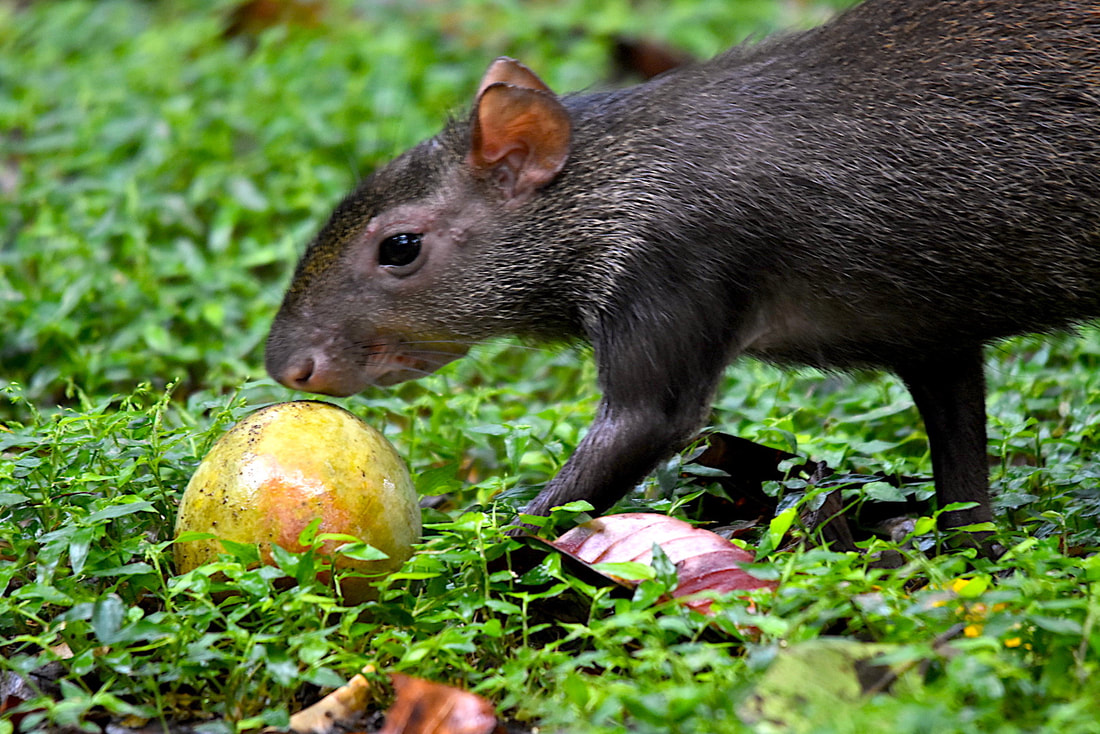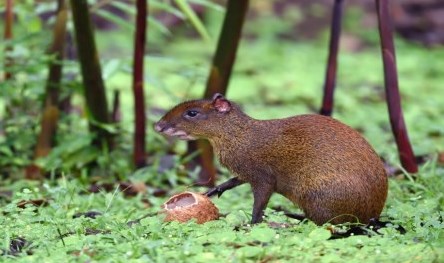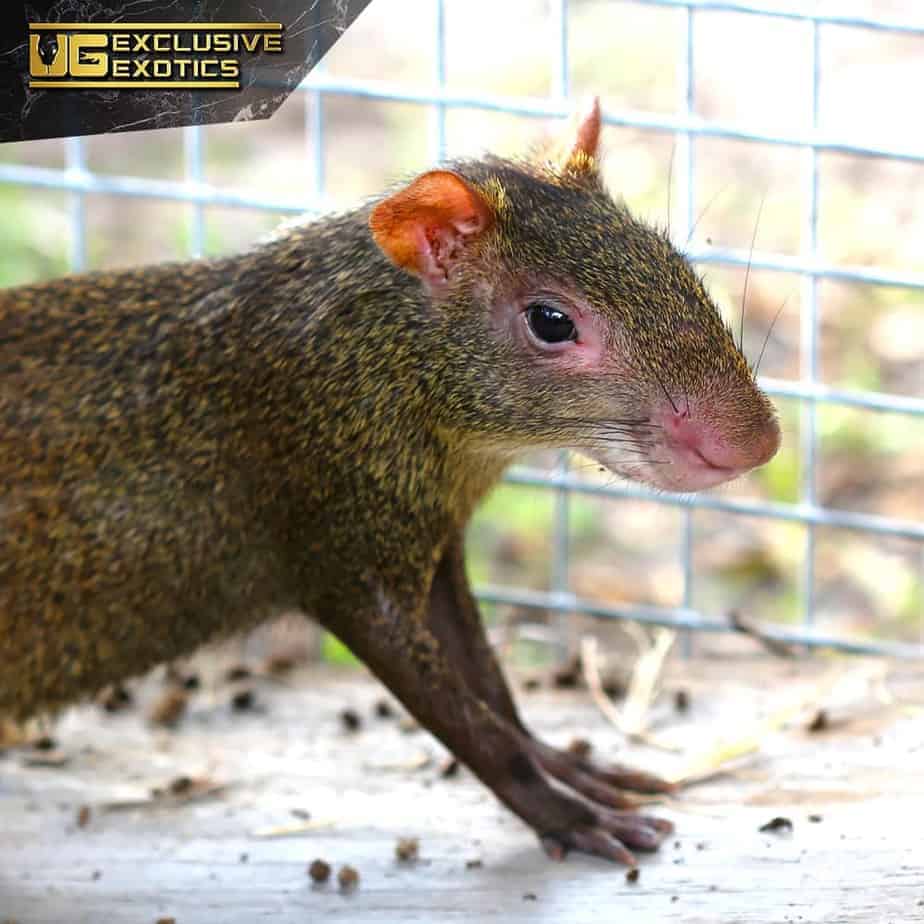
This suggests that whilst all teat pairs were functional, functionality was a poor indicator of litter size suggesting that female agouti young may not have a high dependency on maternal nutrition an possible evolutionary strategy resulting in large wild populations hence its popularity as a game species.

We found (i) no significant correlations (P > 0.05) between teat functionality and litter size and (ii) no significant correlations (P > 0.05) between teat functionality and parturition number. Parturition number had no effect on the mean birth weight of all young (F0.822, P > 0.05), male young (F0.80, P > 0.05) or female young (F0.66, P > 0.05) in the litters.

We compared the average birth weight of all newborns, male newborns and female newborns among agoutis with different litter sizes and different parturitions by one way ANOVA's, while Pearson's Chi-squared tests were used to detect relationships between teat functionality, litter size, and parturition number.
#Red rumped agouti defense mechanism manual
Functionality was assessed by manual palpation of teats from un-sedated females (N=43). Therefore, in this study we evaluated the relationship between mammary functionality with litter size, litter birth weight, and parturition number in captive red-rumped agouti. In precocial mammals, as the red-rumped agouti, maintaining maternal contact to learn foraging patterns may be more important than the energy demands and nutritional constraints during lactation and suckling may not play important roles when compared to altricial mammals. An understanding of the reproductive biology, including the relationship between litter size and teat functionality is crucial for conservation management of this animal. They will horde their food when it is plentiful by burying it in the ground.The red-rumped agouti (Dasyprocta leporina) produces precocial young and is the most hunted and farmed game species in several Neotropical countries. They have a range of vocalizations including an alarm bark that sounds similar to a small dog barking. This is possibly because of the expectation and fear of being attacked by predators. Red-rumped agoutis behave uneasy and act suspicious of their surroundings, in constant observation of their environment with keen caution (Dubost 1998).
#Red rumped agouti defense mechanism series
They are diurnal mammals but they have adapted to become nocturnal in places where they are hunted for food. They use a series of sounds, tactile and body postures to communicate danger to nearby agoutis. They can jump straight up almost six feet in the air! Their front feet have four toes on each foot and their back feet have three toes on each foot. They maintain several sleeping burrows in hollow logs, under trees or under dense vegetation and they leave well-defined paths to the burrows.

They dig burrows along riverbanks, among limestone boulders and under tree roots. Red-Rumped Agoutis like to live near water. Their name comes from the fact that the coloration of the fur on their hindquarters is usually a reddish color. The coloration ranges from brown to black with a yellowish white underbelly. Their ears are small and somewhat square but they have excellent hearing. They usually weigh on average about five pounds. They have small tails that range from 1/3 of an inch to 1 1/3 inches.ĭESCRIPTION: Red-Rumped Agoutis are rodents that grow to about two feet long. They are similar to guinea pigs but they are larger and have longer legs. By doing so they make a significant contribution to the forestation of their natural habitat. Red-Rumped Agoutis are the only mammal species within their native range known to be able to open a Brazil nut husk.

The Red-Rumped Agouti is also called Golden-Rumped Agouti, Orange-Rumped Agouti or Brazilian Agouti. Two male Red-Rumped Agoutis came to live in Connecticut's Beardsley Zoo’s Rainforest building in 2012.


 0 kommentar(er)
0 kommentar(er)
